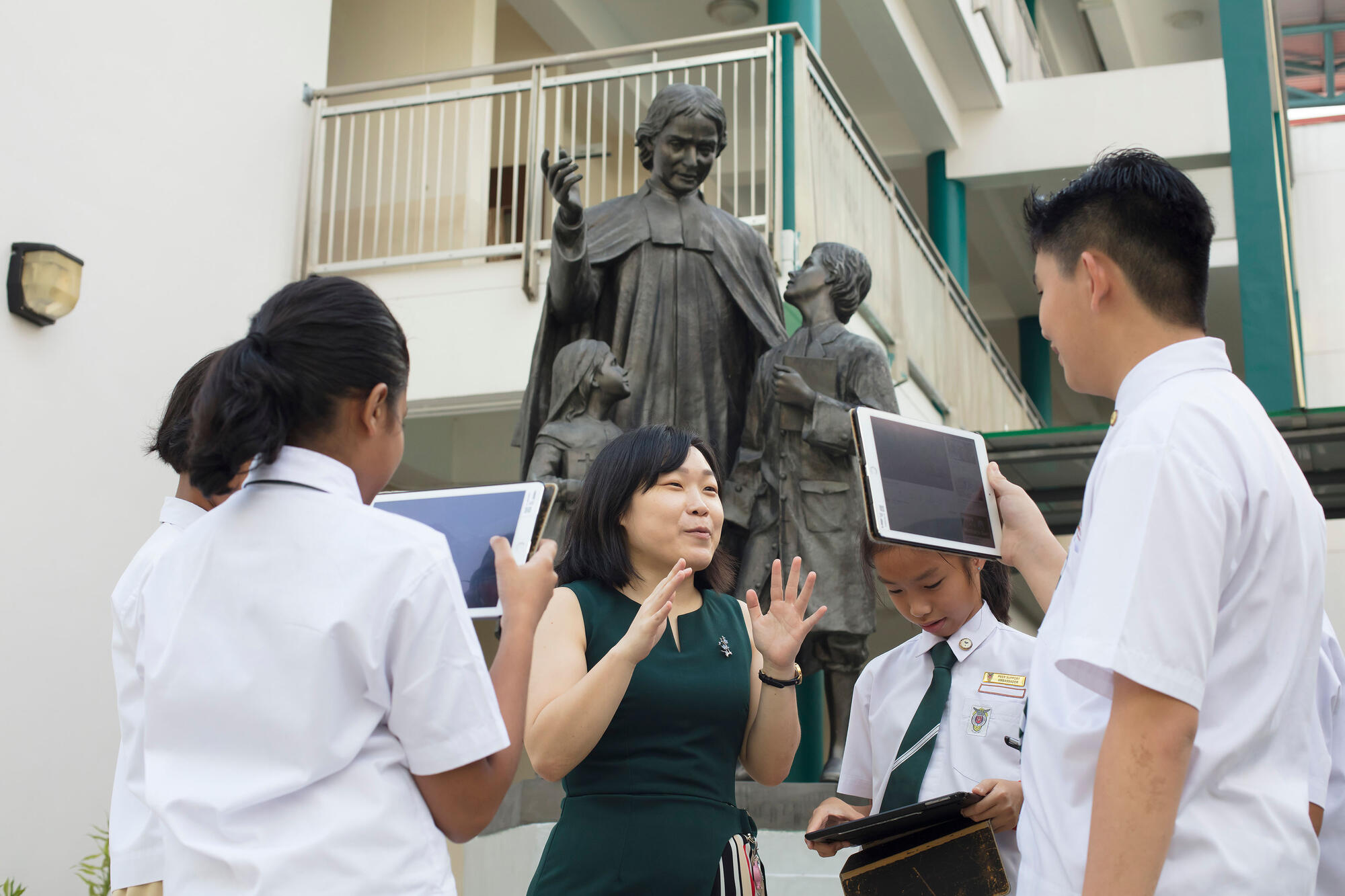ICT in Schools: To Use or Not to Use?
12 Oct 2015

Retired Principal, Mrs Jenny Yeo, shares how ICT can be used effectively in teaching and learning.
Back in 1997, the inaugural Master Plan for Information and Communication Technology (ICT), a national plan for ICT in education, was launched. At that time, Ryan’s mother came to see me with a “happy problem”. She lamented that her primary two son insisted on coming to school even though he was sick. Few students shy away from a day off from school, so I found out more. It turned out to be the day of the week when students linked up with their counterparts from an elementary school in the United States over the Internet for their shared project “It’s a small world after all”.
Ryan’s eagerness to connect with students in the US through the Internet motivated him to go to school. Then, computers were rare and Internet connectivity was slow and expensive. Today, the Internet is widespread and nearly everyone has a mobile device, such that some parents raise concerns about the use of ICT in schools.
One of my favourite ICT-based interdisciplinary projects was Project Hope. Primary 5 students in Radin Mas Primary School were tasked to build a “Shangri-La” for the elderly. They were to create a 3D virtual home for senior citizens and plan a weekly diet menu and activity programme. Students researched online, spoke to elderly relatives, neighbours and teachers, and interviewed a social worker, a nutritionist and an architect to learn about the needs of the elderly. In addition, the students connected with residents from a home for senior citizens in the US to get their suggestions for their ideal home. This was an early introduction to communicating with people from abroad and it gave students an opportunity to be creative as they adapted ideas to the local context.
Through Project Hope, they learnt to consider the needs of others, reach out and care for the elderly. ICT provided the platform, enabling a meaningful and authentic learning experience for students as they develop a future-ready mind set and acquire skills needed in the workplace of tomorrow.
There have since been many developments in ICT for learning. Given a problem, students can use ICT productively to direct their learning, synthesise and evaluate the validity of information, and collaborate with people from across the globe. The online community has facilitated exposure to cross-cultural thinking and other essential skills for our children in this 21st century.
Many schools in Singapore are now harnessing the potential of ICT to develop 21st Century skills in their students. In Yusof Ishak Secondary School, Ms Lin Qiuwen, a science teacher, used ICT in her science inquiry lessons. Students discussed an authentic case of a patient with genetic heart disease by asking questions, making observations, and doing research online. Using an online collaborative platform, the students worked together to construct an explanation for the disease. Digital concept maps were used to summarise the key concepts acquired. Gaps in learning could be addressed based on misconceptions surfaced from the online discussions.
“My students learnt to collaborate with their peers to construct knowledge. The use of technology has also allowed them to share their thinking easily,” said Ms Lin, who is also the subject head of ICT.
Based on my personal experience over the last 40 years, it seems that many students, just like Ryan, are motivated and more engaged in their learning when ICT is used. In this day and age, we as parents and educators need to keep pace with the advances in technology as learning becomes possible anywhere, anytime. I believe that ICT should be embraced as it is a very powerful tool for teaching and learning.





.jpg)